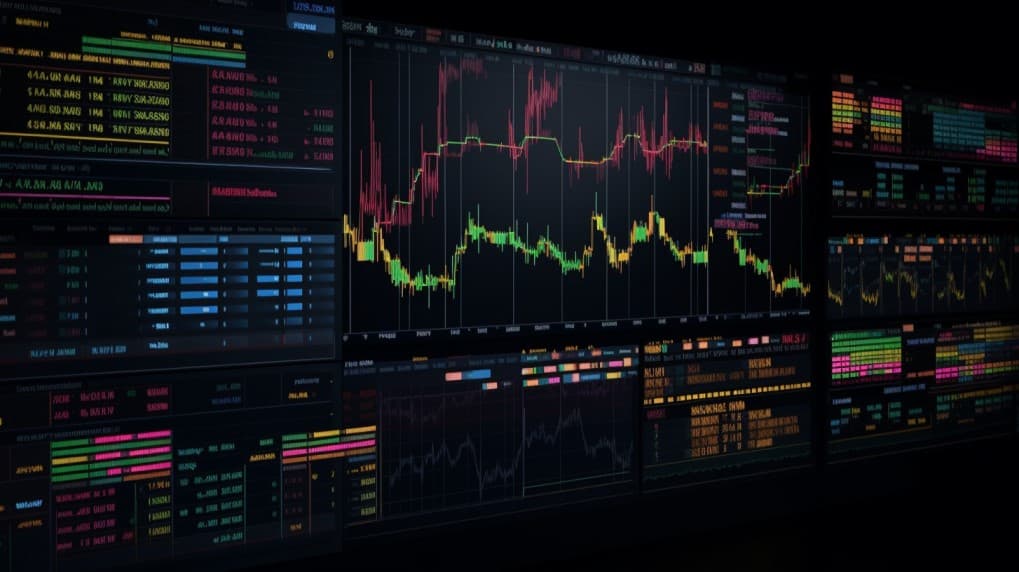
IAU VS GDXJ
Exchange-Traded Funds (ETFs) have revolutionized the investment landscape, providing investors with diversified exposure to various sectors and asset classes. In this article, we will conduct an in-depth comparison between two popular ETFs: IAU (iShares Gold Trust) and GDXJ (VanEck Vectors Junior Gold Miners ETF). Let's delve into a detailed analysis of their tickers, full names, issuers, sectors, top holdings, capitalization, strategy, tracking methods, and exposure.
IAU Vs GDXJ: Overview
IAU and GDXJ are two distinct ETFs that cater to different investment strategies within the gold industry. While IAU focuses on tracking the price of gold directly, GDXJ hones in on junior gold mining companies. This fundamental difference in investment approach leads to varying exposures and associated risks, aspects that we'll explore in the subsequent sections.
IAU Vs GDXJ: Sectors and Top Holdings
The IAU ETF primarily centers around physical gold, with its core holding being gold bullion. On the other hand, GDXJ invests in stocks of junior gold mining companies like Yamana Gold, Pan American Silver, and Northern Star Resources. Understanding the sectors and top holdings of these ETFs aids investors in aligning their investment goals and risk preferences with the appropriate option.
 IAU overlap IAU VS GDXJ
IAU overlap IAU VS GDXJ
IAU Vs GDXJ: Capitalization and Strategy
IAU boasts a significant Asset Under Management (AUM), reflecting its popularity among investors seeking direct exposure to the value of gold. In contrast, GDXJ's strategy is centered around capitalizing on the performance of junior gold mining companies, which can offer higher growth potential but also greater volatility. The differences in capitalization and investment strategy should be taken into account when considering these ETFs.
IAU Vs GDXJ: Tracking and Exposure
The primary objective of IAU is to provide investors with exposure to the daily fluctuations in the price of gold. In contrast, GDXJ offers exposure to the junior gold mining sector. The tracking methodologies differ; IAU closely follows gold prices by holding physical gold, while GDXJ tracks an index of junior gold mining company stocks. Comprehending these diverse tracking and exposure strategies is pivotal for making informed investment decisions.
Conclusion
IAU and GDXJ are two unique ETFs, each catering to a specialized approach for investing in the gold market. For those investors who seek a deeper understanding of the holdings, correlations, overlaps, and other insightful aspects, ETF Insider serves as the ultimate tool. With its user-friendly app, it provides extensive information on these ETFs and other financial instruments, enabling investors to make well-informed decisions.
Disclaimer: This article is provided for informational purposes only and does not offer any investment advisory services.
Sources:
As the investment landscape continues to evolve, ETFs like IAU and GDXJ offer opportunities for investors to diversify their portfolios and gain exposure to specific sectors. Through understanding the nuances of these ETFs, investors can align their investment strategies with their financial goals. Remember, investing always carries inherent risks, and it's crucial to conduct thorough research or consult with a financial advisor before making any investment decisions.
IAU ETF issuer
IAU ETF official page
IAU quote and analysis
Discover the top holdings, correlations, and overlaps of ETFs using our visualization tool.
Our app allows you to build and track your portfolio.
To learn more about the IAU iShares Gold Trust, access our dedicated page now.
FAQ
Why is IAU better than GDXJ?
IAU may be considered better than GDXJ for some investors due to its specific focus, offering diversification.
Does GDXJ beat IAU?
GDXJ's performance relative to IAU will vary over time, depending on market conditions.
Should I invest in IAU or GDXJ?
The choice between IAU and GDXJ should align with your investment goals, risk tolerance, and desired exposure.
Are IAU and GDXJ good investments?
Both IAU and GDXJ can be suitable investments depending on individual investment strategies, goals, and risk profiles.
What is the correlation between IAU and GDXJ?
The correlation between IAU and GDXJ can vary over time, reflecting differences in performance.